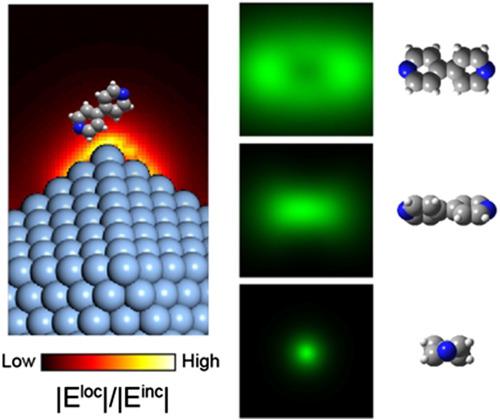当前位置:
X-MOL 学术
›
J. Raman Spectrosc.
›
论文详情
Our official English website, www.x-mol.net, welcomes your feedback! (Note: you will need to create a separate account there.)
Theoretical treatment of single‐molecule scanning Raman picoscopy in strongly inhomogeneous near fields
Journal of Raman Spectroscopy ( IF 2.5 ) Pub Date : 2020-09-25 , DOI: 10.1002/jrs.5991 Yao Zhang 1, 2 , Zhen‐Chao Dong 2 , Javier Aizpurua 1
Journal of Raman Spectroscopy ( IF 2.5 ) Pub Date : 2020-09-25 , DOI: 10.1002/jrs.5991 Yao Zhang 1, 2 , Zhen‐Chao Dong 2 , Javier Aizpurua 1
Affiliation

|
Funding information Eusko Jaurlaritza, Grant/Award Numbers: IT1164-19, KK-2019/00101; Ministerio de Ciencia e Innovación, Grant/Award Number: PID2019-107432GB-I00; National Natural Science Foundation of China, Grant/Award Number: 21804125 Abstract Tip-enhanced Raman spectroscopy (TERS) of a single molecule is commonly described by considering the change in the polarizability of the molecule with respect to a normal coordinate induced by homogeneous illumination. However, the local fields induced by nanoscale and atomic-scale features at the surface of metallic clusters and nanogaps show strong inhomogeneities in their spatial distribution, which induces breaking of Raman selection rules. In this context, the spatial extension of the molecular electronic states subjected to strongly varying local fields challenges the validity of the point–dipole approximation as an adequate description of TERS in such configurations. Here, we introduce a general treatment to simulate single-molecule TERS spectra and their energy-filtered vibrational fingerprints maps, in which the polarization properties of the single molecule and that of the optical enhancing nanoresonator can be calculated separately and then conveniently combined to obtain the total Raman cross section of the molecule under the strongly inhomogeneous field. We apply the general method to study tip-enhanced scanning Raman picoscopy of a 4,4 0 -bipyridine and biphenyl molecules in the proximity of a silver icosahedral cluster with a few atoms at the tip apex mimicking an enhancing picocavity. The polarization of the molecules is calculated within density functional theory (DFT), and the optical response of the tip is calculated within a classical atomistic discrete–dipole approximation. The Raman spectra are found to be extremely sensitive to the spatial distribution of the local fields and to the orientation of the molecule. Our calculations show that the spatial mapping of molecular vibrational fingerprints, as probed by a tip with atomic protrusions, is capable to reveal intramolecular features of a single molecule in real space and thus establish a robust basis for scanning Raman picoscopy.
更新日期:2020-09-25


























 京公网安备 11010802027423号
京公网安备 11010802027423号